If you’re on a journey to grow your hair longer, you may be focusing on products, oils, and scalp massages — but have you considered your hairstyles? The way you wear your hair day-to-day plays a huge role in preventing breakage, protecting your ends, and ultimately promoting growth.
While no hairstyle can magically make your hair grow faster, these protective and low-manipulation styles help retain length, reduce damage, and support a healthy hair growth cycle. Here are 5 hairstyles that actually support hair growth — with detailed styling tips and benefits for each.
1. Loose Braids (Single or Double)
Best For: All hair types, especially curly, wavy, or coily textures
Loose braids are a go-to style for anyone looking to protect their strands and reduce tension on the scalp. By keeping hair tucked away without pulling too tightly, braids minimize friction and daily styling damage — two of the biggest culprits for breakage.
Why Loose Braids Promote Growth:
- Reduce manipulation (less brushing and combing = fewer split ends)
- Keep hair protected from rubbing against clothes or pillows
- Maintain moisture by trapping natural oils
- Prevent knots and tangles
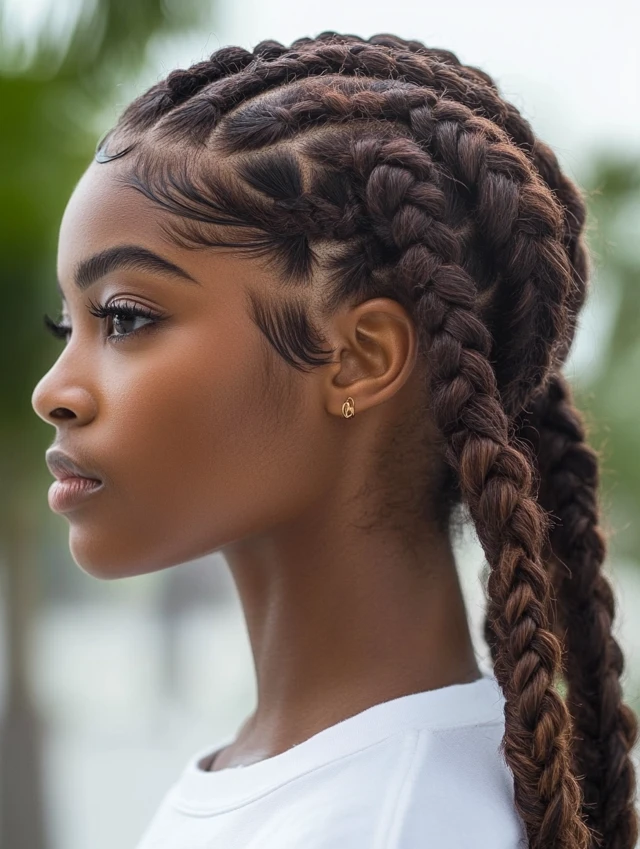



How to Style:
- Start with moisturized, detangled hair (damp or dry works).
- Part your hair into two or more sections.
- Gently braid each section without pulling too tight — the braid should feel secure, not taut.
- Secure ends with a soft scrunchie or snag-free elastic.
- Optional: Apply a lightweight oil (like argan or jojoba) to the braid to seal in moisture.
Pro Tip:
Sleep on a silk or satin pillowcase or use a bonnet to reduce nighttime friction.
2. Low Manipulation Buns (Loose Low Buns)
Best For: Medium to long hair, straight to curly textures
A loose low bun is both elegant and effective in protecting your hair while encouraging growth. It keeps the ends tucked away and prevents mechanical damage from wind, heat, or constant touching.
Why Low Buns Promote Growth:
- Keeps ends protected and moisturized
- Reduces the need for heat styling
- Helps distribute natural scalp oils throughout the hair
- Minimizes daily wear and tear

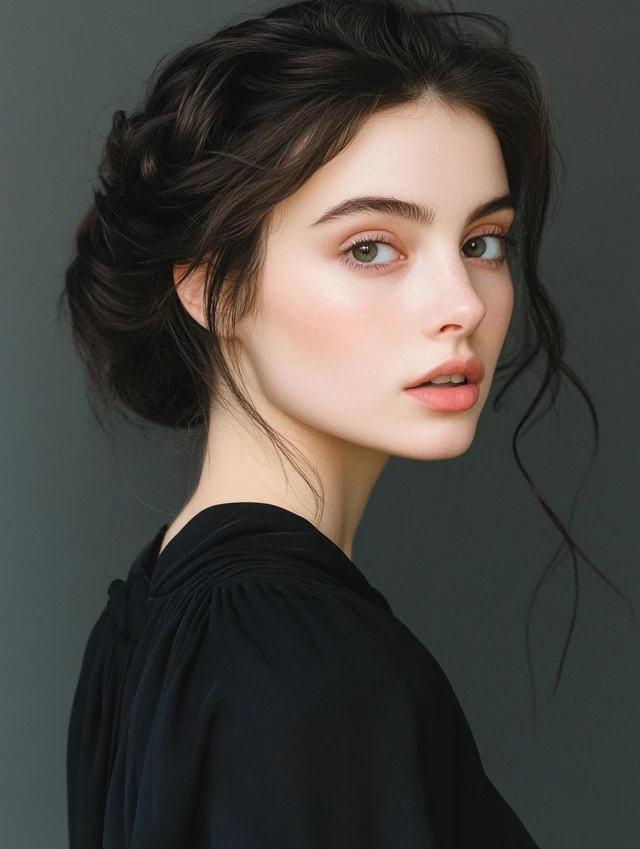

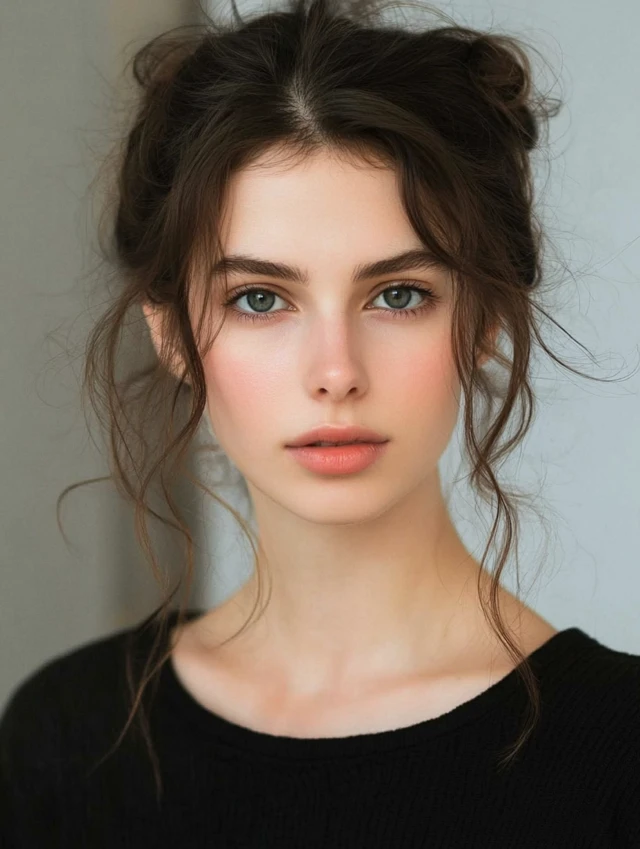
How to Style:
- Start with lightly stretched or detangled hair.
- Apply a leave-in conditioner or light oil to prevent dryness.
- Gather hair into a low ponytail at the nape of your neck.
- Twist the ponytail loosely into a bun and secure with a soft scrunchie or hairpins (avoid tight elastics).
- Avoid brushing too hard — use fingers or a wide-tooth comb.
Pro Tip:
Change the placement of your bun every few days to avoid stress on the same spot, which can cause thinning.
3. Two-Strand Twists
Best For: Natural hair (coily and curly textures), also works on relaxed hair
Two-strand twists are one of the most versatile and growth-friendly protective hairstyles. They allow your hair to rest and grow by minimizing manipulation and exposure to the elements.
Why Twists Promote Growth:
- Low-tension style that gives the scalp a break
- Keeps strands clumped together to reduce tangling and breakage
- Easy to moisturize and maintain over days or weeks
- Encourages healthy ends by preventing them from rubbing or splitting
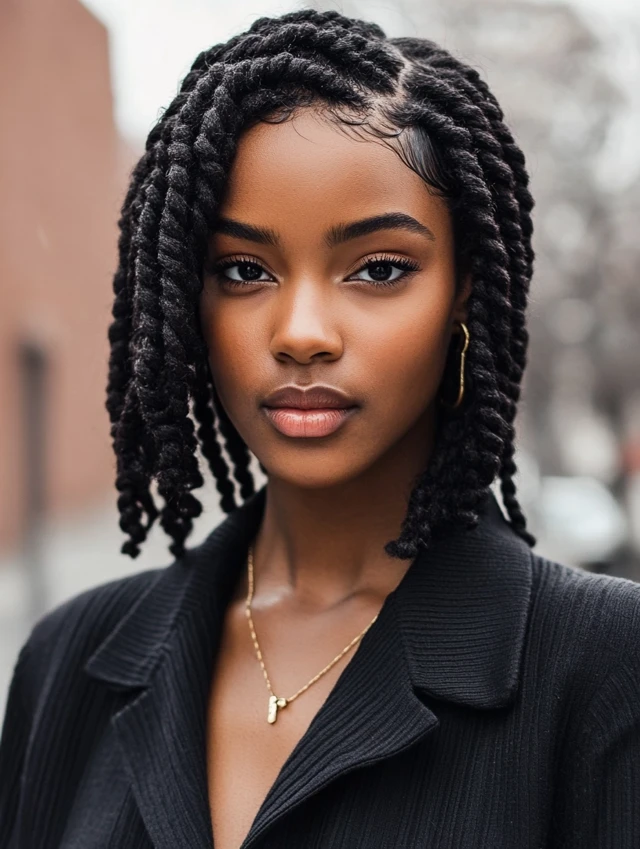
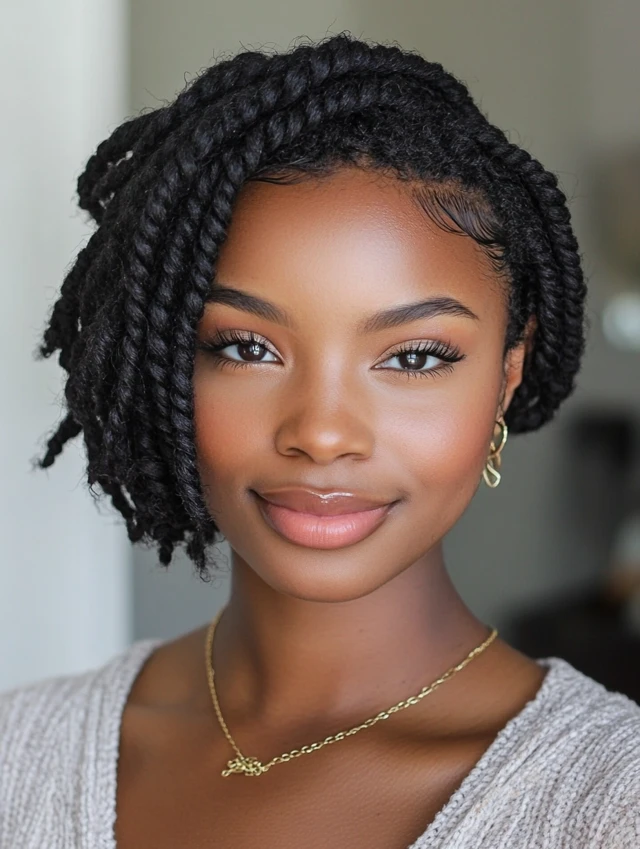
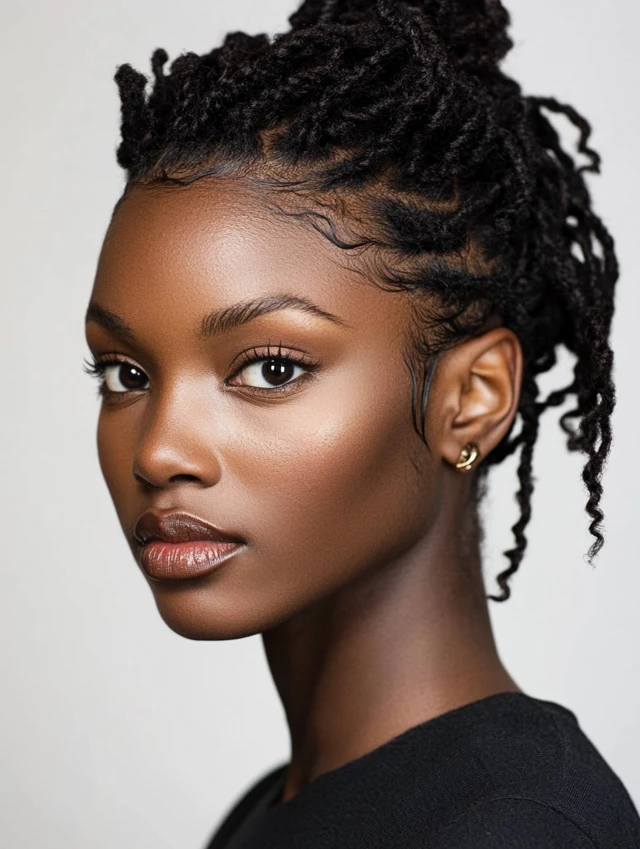
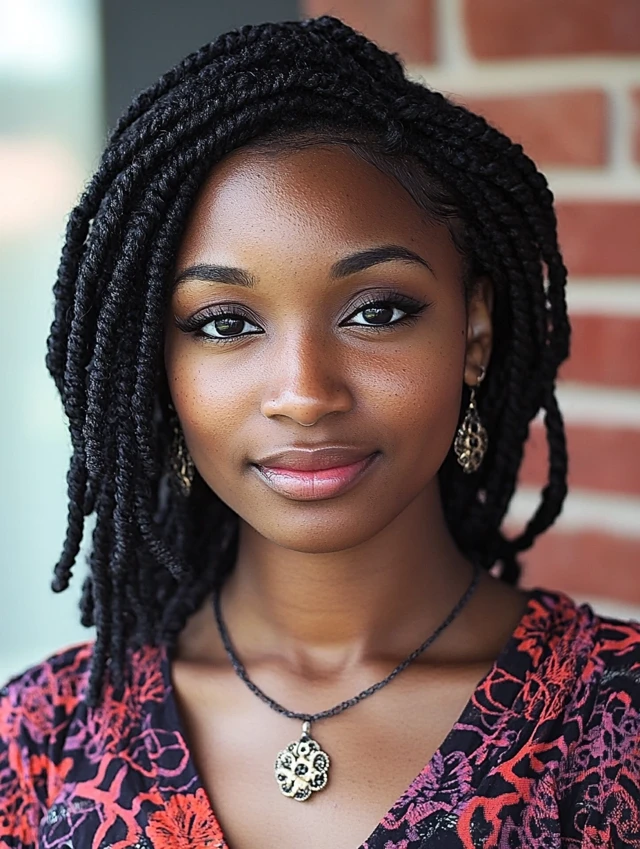
How to Style:
- Start on clean, detangled, and moisturized hair.
- Divide your hair into even sections (large for fewer twists, small for a longer-lasting style).
- Twist two strands from root to tip, ensuring even tension.
- Coil the ends or add perm rods for a curl finish if desired.
- Apply oil or butter to seal and shine.
Maintenance:
- Keep the scalp moisturized every few days.
- Sleep with a satin bonnet or scarf.
- Retwist individual sections only when necessary.
Pro Tip:
If you prefer smaller twists for a longer-lasting style, avoid twisting too tightly at the scalp to protect your edges.
4. Cornrows or Flat Twists (Loose & Neat)
Best For: Textured hair types (3B–4C), transitioners, or protective styling
Cornrows and flat twists are traditional protective styles that keep hair close to the scalp while protecting ends and allowing easy access for scalp care. When done loosely and neatly, they can be worn for 1–2 weeks and styled in many ways.
Why Cornrows Promote Growth:
- Keeps ends protected and hair detangled
- Allows regular scalp oiling or massaging
- Reduces manipulation — no daily detangling or heat use
- Ideal for wig or scarf wear without damaging real hair

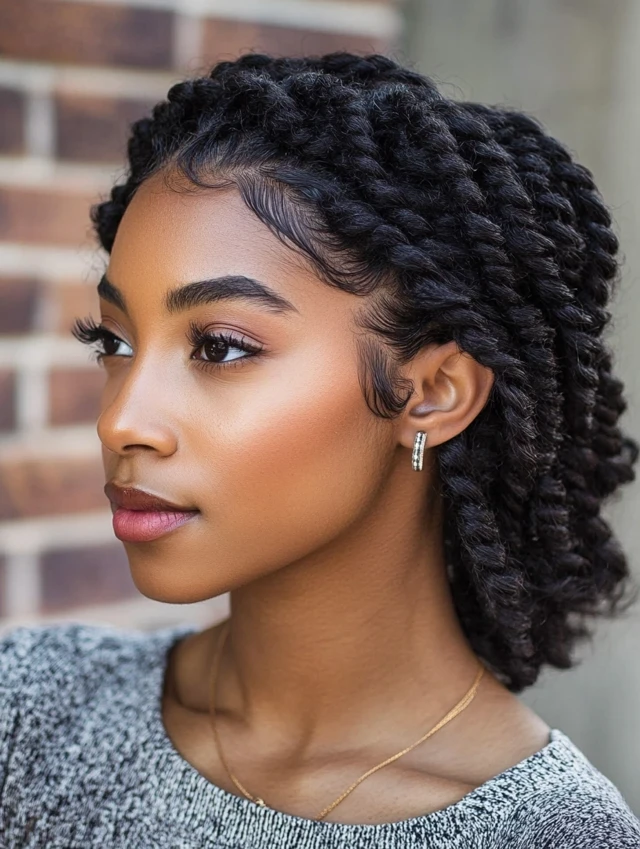

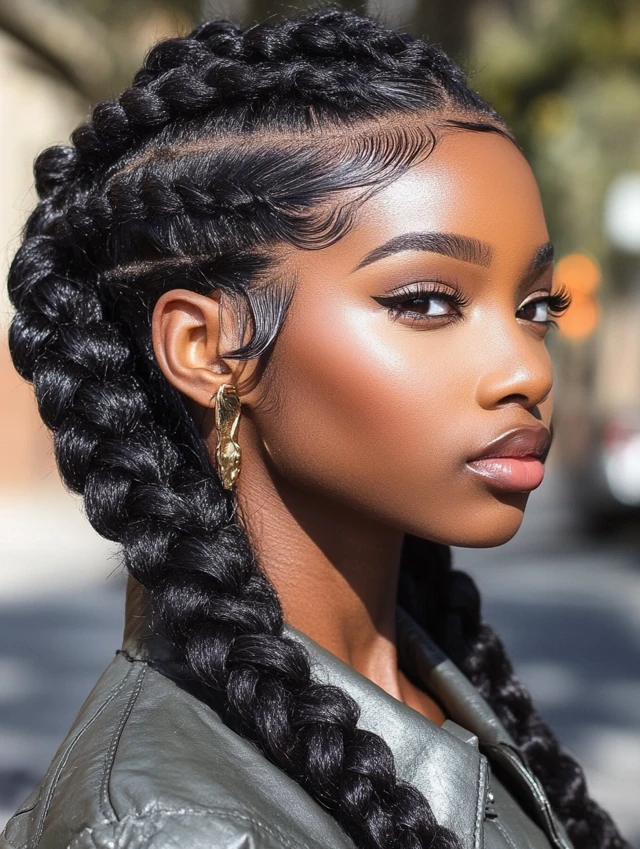
How to Style:
- Start on stretched or blow-dried hair for neatness (optional).
- Divide the hair into your desired number of sections.
- Braid or flat twist each section loosely, avoiding pulling at the scalp.
- Moisturize and oil the scalp as needed throughout the week.
Pro Tip:
Avoid using synthetic hair unless necessary, and if you do, keep it lightweight and ensure proper scalp hydration underneath.
5. Halo Braid (Crown Braid)
Best For: Medium to long hair, natural or relaxed, also great for transitioning
The halo braid — a large, thick braid wrapped around your head like a crown — is a stunning, low-tension style that’s great for growth and a favorite for heatless elegance.
Why the Halo Braid Promotes Growth:
- Tucks away ends and prevents breakage
- Keeps hair stretched, reducing tangles and knots
- Reduces manipulation and protects your edges
- Great for special occasions without damaging styling tools


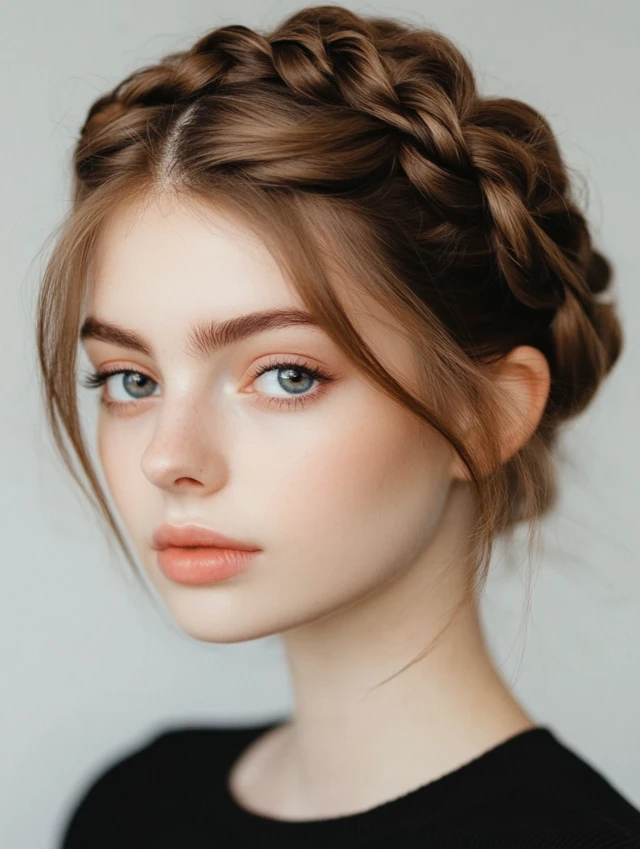
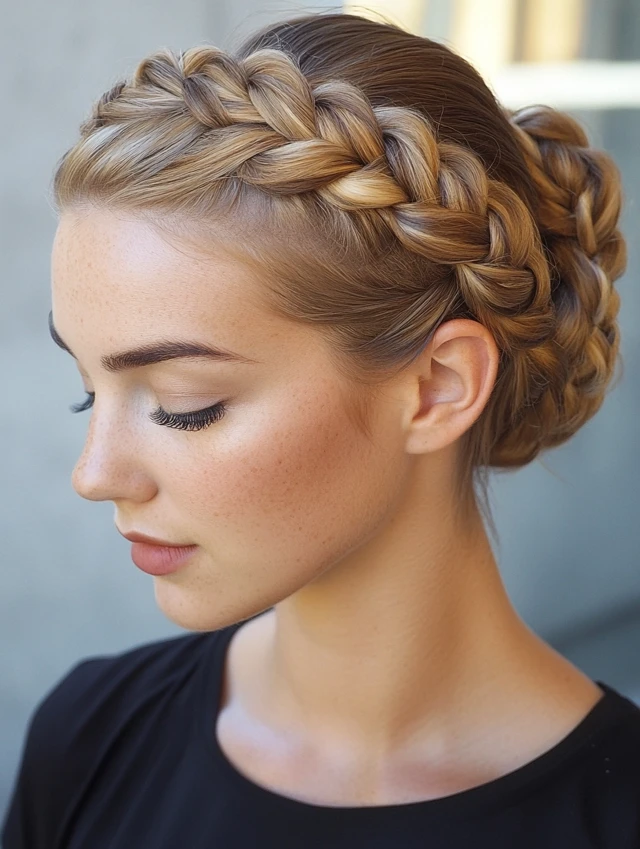
How to Style:
- Start on stretched or blow-dried hair (optional for smoother results).
- Part hair from ear to ear and begin braiding around your crown in one large braid (or do two and pin them across the top).
- Use moisturizing cream or styling butter for hold and hydration.
- Pin the ends securely and apply edge control if desired.
Pro Tip:
If your hair isn’t long enough for a full halo braid, use added braid hair in a matching shade for a fuller crown.
🧠 Additional Growth-Friendly Hairstyling Tips
- Switch up styles regularly to prevent scalp stress and breakage from tension in the same spots.
- Never braid or twist too tightly, especially around the edges.
- Use heat-free styles whenever possible to avoid damaging hair’s natural structure.
- Prioritize moisture retention before styling — dry hair breaks more easily.
- Add scalp massages 2–3 times a week using oils like rosemary or peppermint to stimulate growth.
💡 Quick Comparison Table
| Hairstyle | Protective | Low Tension | Long-Lasting | Best For |
|---|---|---|---|---|
| Loose Braids | ✅ | ✅ | ⚠️ (short term) | All hair types |
| Low Loose Bun | ✅ | ✅ | ⚠️ (daily) | Straight to curly |
| Two-Strand Twists | ✅✅ | ✅ | ✅ | Coily, curly |
| Loose Cornrows/Twists | ✅✅ | ✅ | ✅✅ | Coily, transitioning hair |
| Halo Braid | ✅ | ✅ | ⚠️ (short-medium) | Medium to long hair |
Frequently Asked Questions
Q: Can hairstyles actually make my hair grow faster?
A: Hairstyles don’t affect the speed of hair growth but prevent breakage, helping you retain more length, which is the key to growing longer hair.
Q: Should I leave protective styles in for months?
A: No. Leaving styles in too long (6+ weeks) can cause matting, buildup, and breakage. Two to four weeks is optimal for most.
Q: What’s the worst hairstyle for hair growth?
A: Tight ponytails, buns, or braids that constantly pull on the scalp or edges can cause traction alopecia. Opt for low-tension alternatives.
Q: Can I use heat on protective styles?
A: It’s best to avoid heat. If needed, use low-heat settings and protectants to prevent moisture loss and damage.
Final Thoughts
Healthy hair growth is about consistency, protection, and gentle care — and your hairstyle plays a major role in that. Whether you’re aiming for waist-length curls or just trying to improve thickness and retention, these five styles give your hair the break it needs to grow.
So the next time you’re styling your hair, choose a look that protects your strands, flatters your face, and supports your healthy hair journey — one twist, bun, or braid at a time.